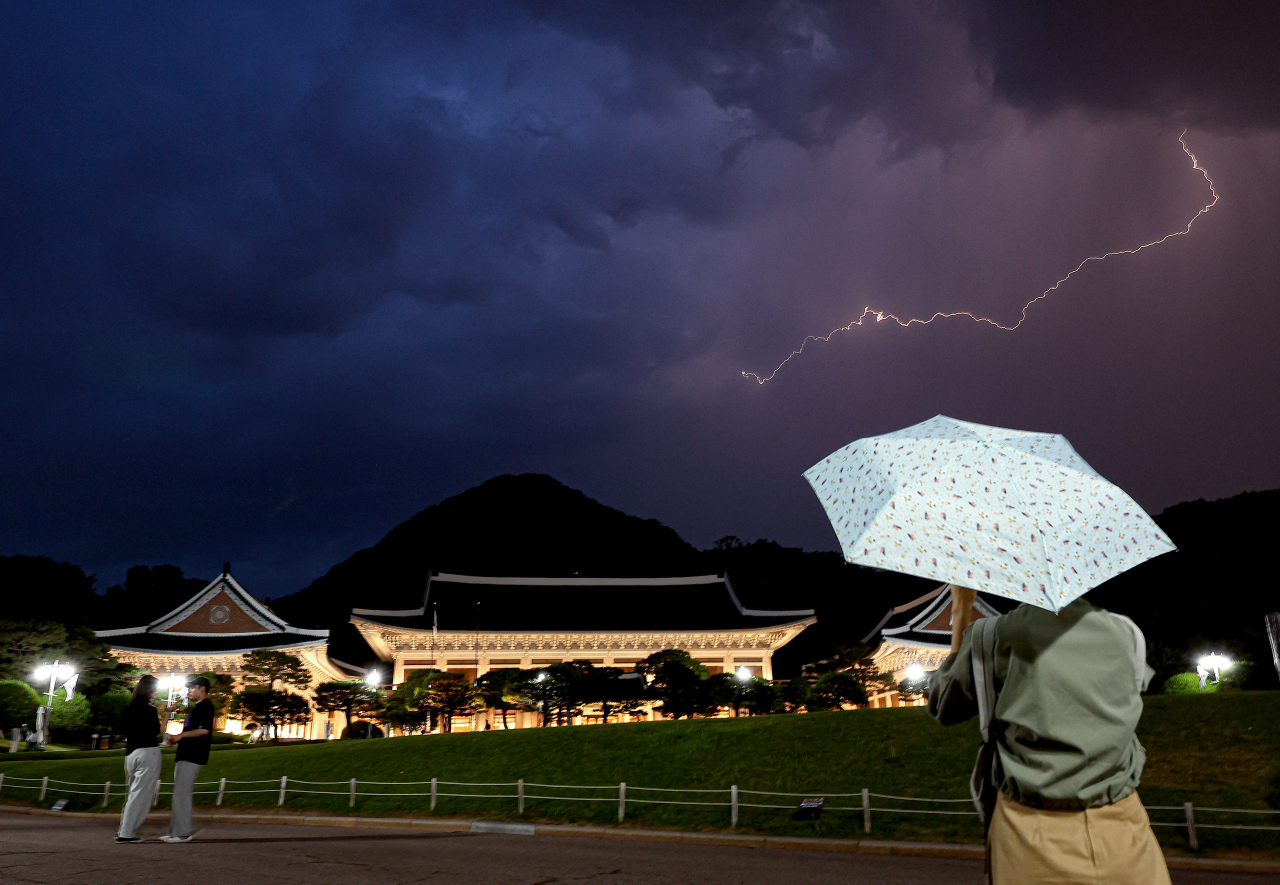 |
Lightning strikes behind Cheong Wa Dae, in Jongno, Seoul, June 8. (Yonhap) |
South Korea saw a record number of days with thunder and lightning in June, while the monthly average temperature was the fourth warmest ever recorded, the weather agency said Thursday.
Lightning struck 3.5 days across the country last month on average, surpassing the June average of 1.9 days, according to the Korea Meteorological Administration.
The national average temperature last month was 22.3 degrees Celsius, marking the fourth-hottest June since 1973. The year 1973 is the standard for various climate records as it is the year when comprehensive weather observation networks were expanded across the country.
The average days of heat waves and tropical nights across the country last month were 0.9 and 0.1 day, respectively, higher than the June average in the past 50 years -- 0.7 day of heat waves and no tropical nights. In particular, Seoul experienced tropical nights in June for a second consecutive year, after experiencing tropical nights in June for the first time last year.
Korea's definition for a tropical night is when the overnight temperature does not dip below 25 degrees Celsius.
In early June, warm air from inland China and Mongolia heated the country, and in the second half, the temperature was high due to hot southwest winds along the edge of the North Pacific high pressure system, the weather agency explained.
Moreover, monthly precipitation recorded 208.9 millimeters, surpassing the June average of 101.6 to 174 mm, due to monsoon rains centered on Jeju Island and the southern regions from Sunday.
Meanwhile, from early Friday to Saturday night, monsoon rains of 30 to 60 mm per hour and up to 150 mm per hour are expected in the southern region.
Through Saturday, the weather forecaster expects 50-100 mm of rain in South Jeolla Province, South Gyeongsang Province and Jeju Island, 20 to 80 mm in North Jeolla Province and southern North Gyeongsang Province, and 5 to 30 mm in the southern part of North and South Chungcheong provinces and northern North Gyeongsang Province.
After rain, the heat wave will continue again from Sunday with showers due to the atmospheric instability to hit nationwide. The KMA said tropical nights could also be expected with heat wave advisories.
Also, storm surge advisories were in place for some parts of Gangwon Province's east coast -- Sokcho, Goseong and Yangyang -- as of 3:20 p.m. on Thursday. A storm surge happens when land is submerged in seawater due extreme tides, low atmospheric pressure and storms. It is different from tsunamis, which are caused by earthquakes.
The advisories came into effect as the moon's gravitation increased, raising the water level during high tide. The KMA demanded caution, citing the possibility of flooding in low-lying coastal areas and subsequent accidents.







